The Berlin Wall 30 years later: A New Brunswick man remembers
It happened by mistake, but it was an error that spelled the end of the Berlin Wall.
On Nov. 9, 1989, thousands of East Germans walked from East to West Berlin while a few puzzled guards looked on, powerless to stop them.
Thirty years later, New Brunswick's Rick Hancox still loves to talk about what it was like to live in Germany and witness the end of the Cold War.
"Being part of it and sort of experiencing it — the before, the during and the after — it was quite fascinating," the Rothesay man said.
And it all started in a fascinating way, when a government official misspoke at a news conference.
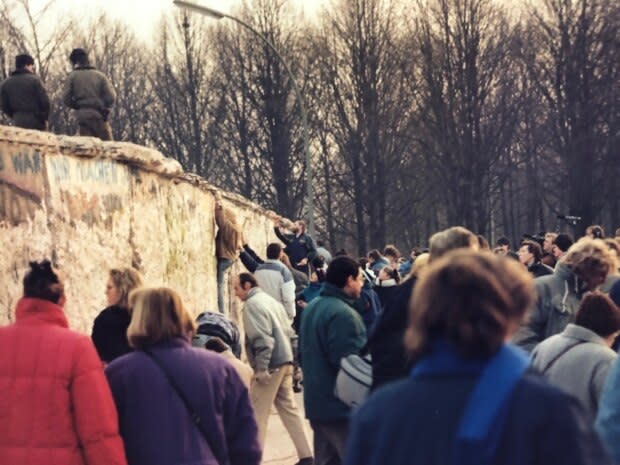
In the fall of 1989, the Communist government in the German Democratic Republic was under tremendous pressure for change.
In October, a huge demonstration in Leipzig brought out at least 70,000 demonstrators. They wanted more freedom and a better life.
A slip of the tongue
The country was economically stagnant and faced shortages of even the most basic day-to-day items.
Other Eastern Bloc countries like Poland, Czechoslovakia, Romania and the Baltic States were seeing similar protests.
In an effort to satisfy demonstrators, East Germany's government moved to loosen travel restrictions.
But somehow, a hastily scribbled note on the new rules was passed to government spokesman Günter Schabowski just before his regular news conference.
"Private travel outside the country can now be applied for without prerequisites," he read.
The reporters were shocked and asked when this would take effect.
Stuck for an answer, Schabowski said it was immediate.
That evening, thousands showed up at checkpoints all along the East German/West German border.
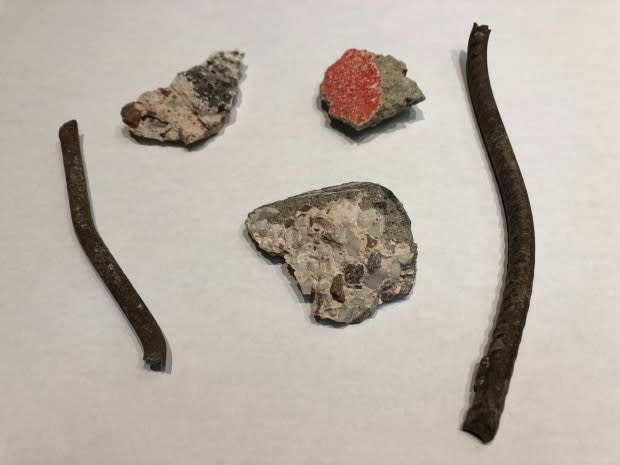
Hancox was in Germany as part of a NATO shipbuilding project, based in Hamburg, which was only about 50 kilometres from the border.
When East Germans were suddenly free to cross, some headed to Hamburg.
"You could pick out the East Germans immediately in the downtown." Hancox said.
"Stores were getting ready for Christmas and all the lights and displays and so on, and you could pick out the East Germans standing in front of the shop windows, just taking in all the electronics, and all the lights, and all the glitz and glamour."
Hancox remembers a conversation with one gentleman who had trouble absorbing what he was seeing.
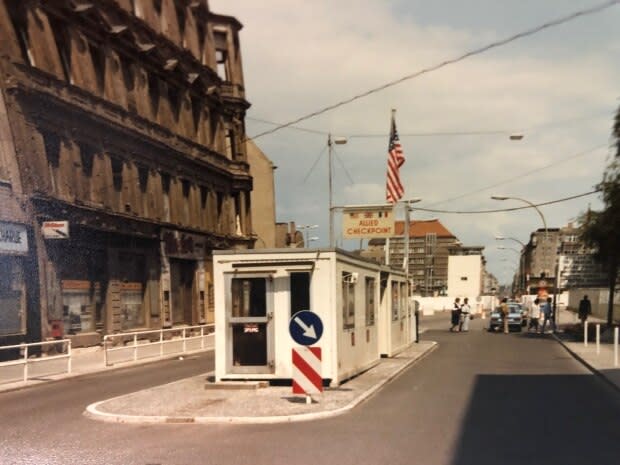
"He said 'You can't begin to understand what it's like to realize you've been lied to for 40 years. We were always told the wall was put up there to keep out the bad Western influence and to protect us. And we come across [from] the East and we see the civilization, we see this plenty, this abundance. We can go in the store, we could buy whatever we want, whenever we want.'"
Hancox said that in the first week, it became clear what East Germans wanted most.
"They cleaned out the border towns of coffee, fresh fruit, and small electronics."
'Heavy military presence'
It's little wonder the newfound freedom was difficult for them to absorb. Hancox described what it was like to get back to the West by train at the height of the Cold War in 1981.
"You got on the train, it was sealed. The East German guards came on. They took your passports. They checked you out. They looked at your bags. The train was sealed."
Then, when the train crossed into West Germany, "they came on again," Hancox said. "They did another inspection and you got off.
"It was very heavy military presence."
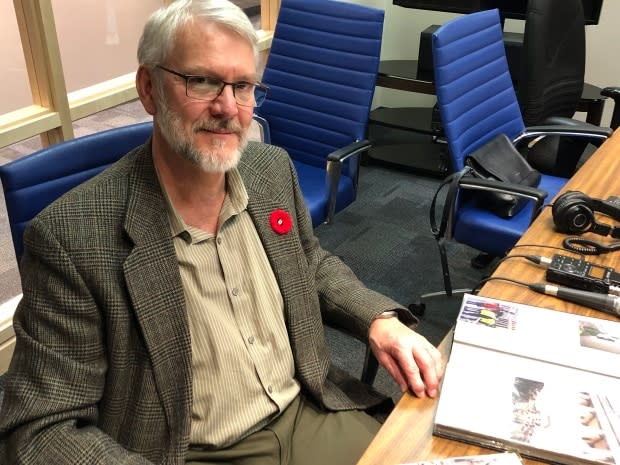
And it truly hit home looking into the no-man's land between East and West Berlin
"Minefields, anti-tank barricades, machine gun nests, armed guards patrolling, dogs on leashes patrolling," Hancox said, "It was pretty intimidating."
His trip back to Berlin in 1989 in the wake of the events on Nov. 9 was a very different experience.
"As we got closer to the wall, you could hear this noise … and the closer you got to the wall you realized it was people hammering, chipping away at the wall.
"I've got a picture here of people chipping away at the wall, with the guards — East German guards — walking along the top of the wall, just not paying any attention."
"It was really an exciting time. You could feel the buzz in the air."
What struck Hancox most about that 1989 trip was one of the many memorials to East Germans who died trying to get over the wall.
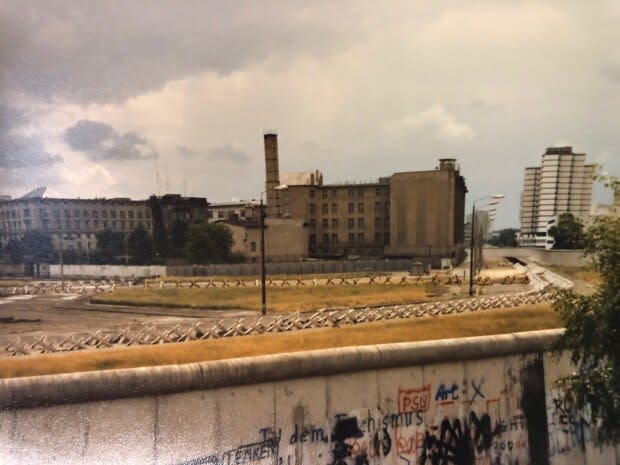
It was for Winfried Freudenberg.
"The last person [to die] trying to escape over the wall was March of 1989," Hancox said, "and the wall came down in November of 89".
Hancox returned to Berlin in 2014. In just 25 years, the reintegration of the two cities into one has been "seamless," he said.
And the famous Brandenburg Gate has become the symbol of that success.
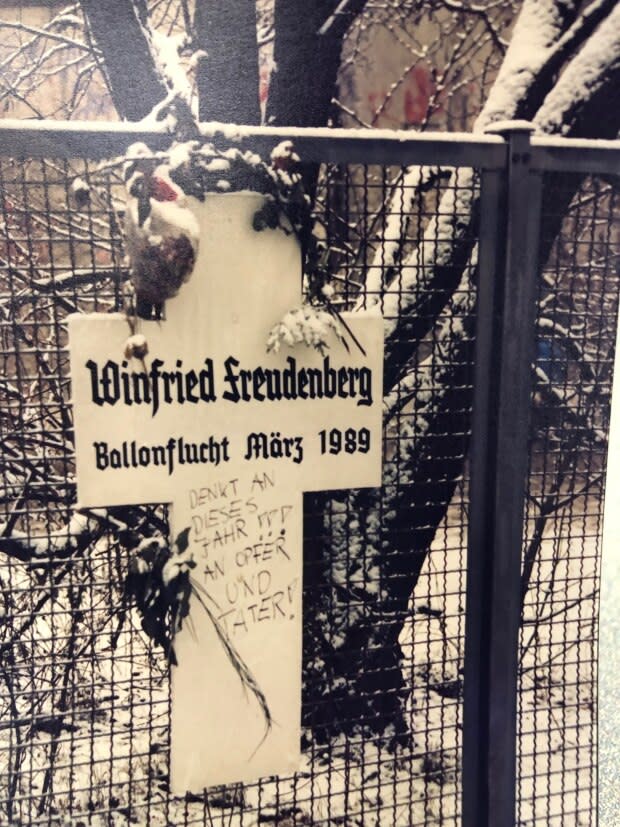
Before the wall came down, it was in East Berlin, just a stone's throw from the wall.
For Hancox, the before and after photos couldn't be more different.
"When you look at it there, buried behind the wall, and then you look at it when the wall's come down and it's a, you know, it's a people place. It's a big plaza and people are attracted to it."


